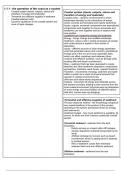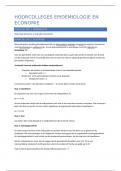Lecture notes
Eduqas A Level Geography Component 1: Changing Coastal Landscapes | Revision Bundle, Everything You Need To Know
- Institution
- CCEA
This document consists of all the knowledge needed for in Paper 1 Eduqas Geography A Level. It breaks down each point of the specification and includes both in A01 and A02 in detail. This includes: the operation of the coast as a system, temporal variations and their influence on coastal environmen...
[Show more]




